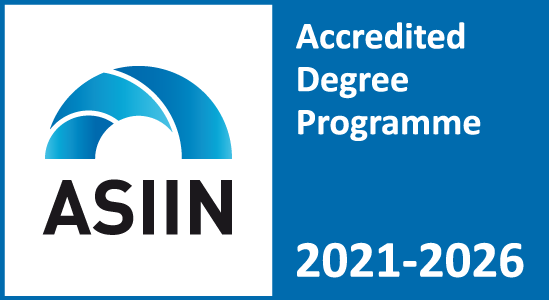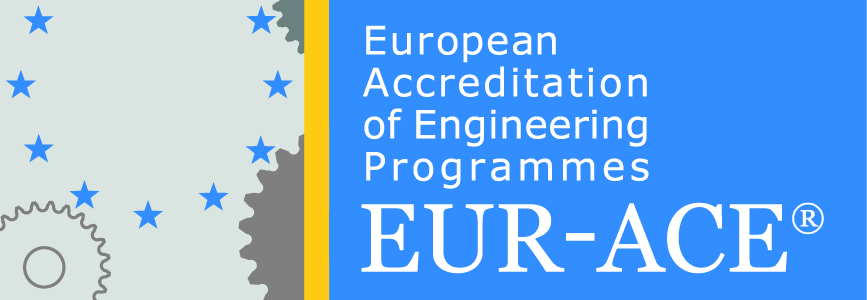| 1. Course Title | Mechatronics Fundamentals | |||||||
| 2. Code | 3ФЕИТ02Л017 | |||||||
| 3. Study program | EAOIE | |||||||
| 4. Organizer of the study program (unit, institute, department) | Faculty of Electrical Engineering and Information Technologies | |||||||
| 5. Degree (first, second, third cycle) | First cycle | |||||||
| 6. Academic year/semester | III/6 | 7. Number of ECTS credits | 6.00 | |||||
| 8. Lecturer | Dr Mihail Digalovski | |||||||
| 9. Course Prerequisites | Taken course: Fundamentals of electrical engineering | |||||||
|
10. Course Goals (acquired competencies): Acquire basic knowledge about mechatronics fundamentals as integration of electrical, electronics and computer technology applied for control of mechanical systems. Analysing and using of mechatronics systems. |
||||||||
|
11. Course Syllabus: Introduction. Structure of mechatronics system. Basic system components (sensors and transducers, signal processing, data display systems). Actuators (pneumatic, hydraulic, mechanical, electrical). Models of mechatronics system. Fundamentals of digital logic. Microprocessor-based mechatronics systems (microprocessors, input/output units, programmable logic controllers, communication systems, finding errors). |
||||||||
| 12. Learning methods: Interactive lectures, auditorium and laboratory exercises | ||||||||
| 13. Total number of course hours | 3 + 1 + 1 + 0 | |||||||
| 14. Distribution of course hours | 180 | |||||||
| 15. Forms of teaching | 15.1. Lectures-theoretical teaching | 45 | ||||||
| 15.2. Exercises (laboratory, practice classes), seminars, teamwork | 30 | |||||||
| 16. Other course activities | 16.1. Projects, seminar papers | 5 | ||||||
| 16.2. Individual tasks | 10 | |||||||
| 16.3. Homework and self-learning | 90 | |||||||
| 17. Grading | 17.1. Exams | 0 | ||||||
| 17.2. Seminar work/project (presentation: written and oral) | 0 | |||||||
| 17.3. Activity and participation | 0 | |||||||
| 17.4. Final exam | 100 | |||||||
| 18. Grading criteria (points) | up to 50 points | 5 (five) (F) | ||||||
| from 51 to 60 points | 6 (six) (E) | |||||||
| from 61 to 70 points | 7 (seven) (D) | |||||||
| from 71 to 80 points | 8 (eight) (C) | |||||||
| from 81 to 90 points | 9 (nine) (B) | |||||||
| from 91 to 100 points | 10 (ten) (A) | |||||||
| 19. Conditions for acquiring teacher’s signature and for taking final exam | Realized activities 15.1 and 15.2 | |||||||
| 20. Forms of assessment | The course is passed through two partial exams during the semester or through a final exam. The questions cover the theoretical part and the tasks from the auditory exercises. The exam is passed with a minimum of 51 percent of the total number of points. Also during the semester, students take tests, prepare seminars and continuously monitor their activity | |||||||
| 21. Language | Macedonian and English | |||||||
| 22. Method of monitoring of teaching quality | Selfevaluation | |||||||
| 23. Literature | ||||||||
| 23.1. Required Literature | ||||||||
| No. | Author | Title | Publisher | Year | ||||
| 1 | Lyshevski S. E. | Electromechanical systems, electric machines and applied mechatronics | ||||||
| 2 | Bolton W. | Mechatronics | ||||||
| 3 | Stoelting H. D., Kallenbach E. | Handbuch elektrishe kleinantriebe | ||||||
| 23.2. Additional Literature | ||||||||
| No. | Author | Title | Publisher | Year | ||||
| 1 | А.Е. Фицџералд, Чарлс Кингсли Помладиот, Стефан Д. Уманс | Електрични машини. (шесто издание) | McGraw-Hill Science/Engineering/Math | |||||



